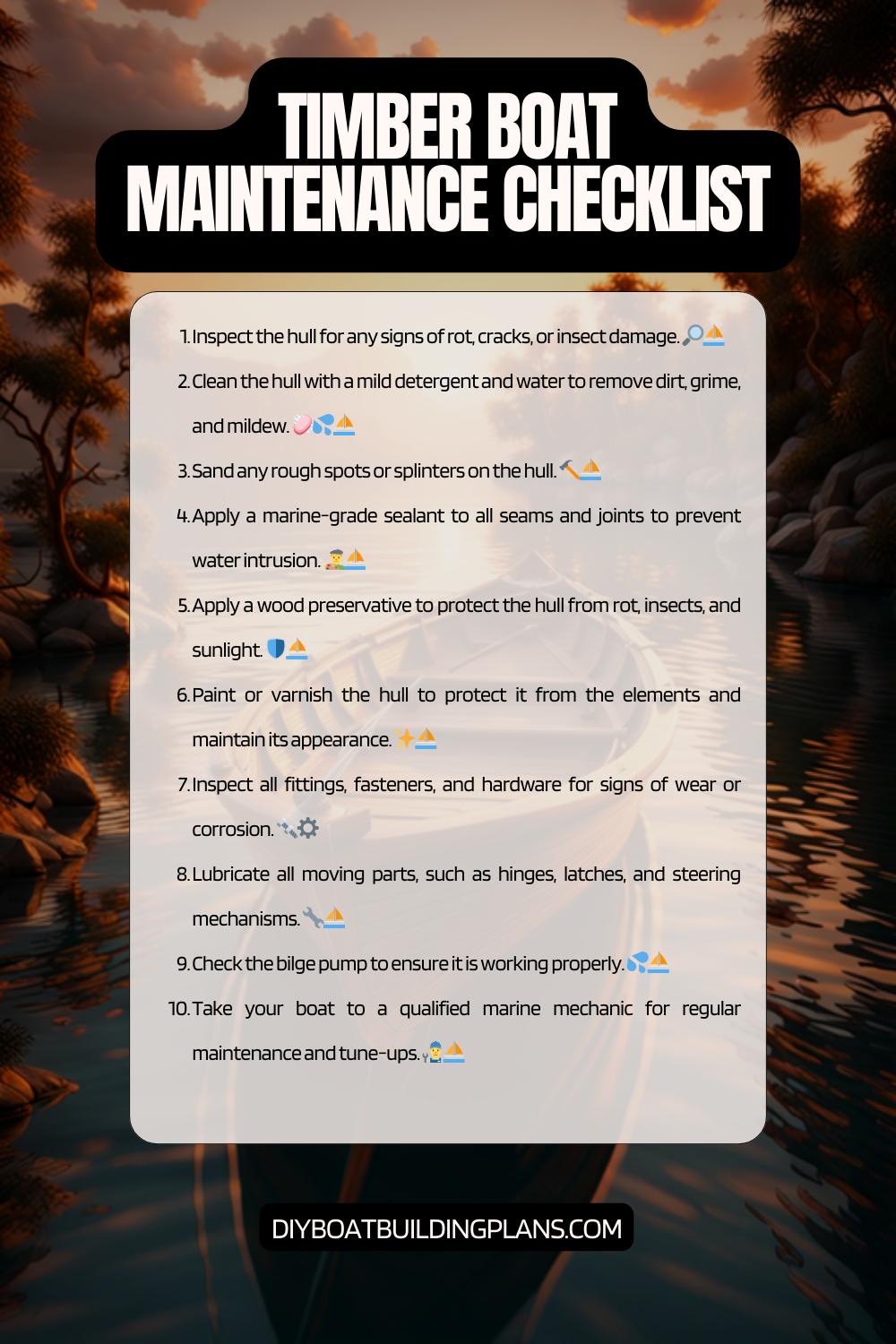Overview of Timber Boat Maintenance Tips
Timber boats have a rich history and are known for their classic beauty and craftsmanship. These boats are made from various types of wood, such as teak, mahogany, or oak, and require regular maintenance to keep them in top condition. In this article, we will explore the importance of timber boat maintenance and provide tips on how to properly care for your beloved vessel.
Maintaining a timber boat is crucial to ensure its longevity and preserve its aesthetic appeal. Timber is a natural material that can be susceptible to damage from moisture, sunlight, and other environmental factors. Without proper maintenance, the wood can deteriorate, leading to structural issues and compromising the overall integrity of the boat. By implementing a regular maintenance routine, you can prevent costly repairs and extend the lifespan of your timber boat.
Key Takeaways
- Regular maintenance is crucial for the longevity of a timber boat.
- Cleaning and polishing the hull, maintaining the deck and cockpit, and checking and replacing hardware are important tasks.
- Properly maintaining the engine and electrical systems is essential for safe and efficient operation.
- Protecting the timber from moisture and sunlight is necessary to prevent damage.
- Winterizing the boat and following safety tips are also important aspects of timber boat maintenance.

Importance of Regular Maintenance
Regular maintenance is essential for timber boats as it offers numerous benefits. Firstly, it helps to prevent the accumulation of dirt, grime, and algae on the hull, which can negatively impact the boat’s performance and fuel efficiency. Regular cleaning and polishing of the hull not only enhance the boat’s appearance but also reduce drag in the water, allowing for smoother sailing.
Neglecting maintenance can have severe consequences for timber boats. Without proper care, the wood can become susceptible to rotting, warping, or cracking. This can compromise the structural integrity of the boat and pose safety risks for both passengers and crew. Additionally, neglecting maintenance can lead to more extensive damage that requires costly repairs or even complete restoration. By investing time and effort into regular maintenance, you can avoid these issues and enjoy your timber boat for years to come.
Cleaning and Polishing the Hull
Cleaning the hull is an essential part of timber boat maintenance. Start by rinsing off any loose debris with fresh water. Then, use a mild detergent or boat soap specifically designed for timber boats to clean the surface. Gently scrub the hull with a soft brush or sponge, paying attention to any stubborn stains or algae growth. Rinse thoroughly to remove all traces of soap.
Once the hull is clean, it’s time to polish it to restore its shine and protect the wood. Choose a high-quality marine-grade polish that is suitable for timber boats. Apply the polish using a soft cloth or applicator pad, following the manufacturer’s instructions. Work in small sections, applying even pressure and circular motions. Allow the polish to dry before buffing it off with a clean cloth. Regularly polishing the hull will not only keep it looking beautiful but also provide a protective barrier against UV rays and moisture.
Maintaining the Deck and Cockpit
| Maintenance Task | Frequency | Time Required | Cost |
| Cleaning the deck and cockpit | Weekly | 1-2 hours | Free |
| Inspecting and tightening deck hardware | Monthly | 1-2 hours | Free |
| Replacing worn or damaged lines | As needed | Varies | 10-50 per line |
| Refinishing teak decking | Annually | 10-20 hours | 100-500 |
| Replacing non-skid surfaces | As needed | Varies | 50-200 per square foot |
The deck and cockpit of a timber boat are exposed to constant foot traffic, saltwater, and other elements. Regular cleaning and maintenance are necessary to keep them in optimal condition. Start by sweeping or vacuuming the deck to remove any loose dirt or debris. Then, use a mild detergent or boat soap to clean the surface, similar to cleaning the hull. Pay special attention to any areas with stubborn stains or mold growth.
To maintain the deck’s appearance and protect it from wear and tear, consider applying a deck sealant or protective coating. This will help prevent water penetration and minimize damage caused by exposure to sunlight and saltwater. Additionally, regularly inspect the deck for any loose or damaged boards and replace them as needed.
When it comes to maintaining the cockpit, focus on cleaning and protecting the upholstery, cushions, and other seating areas. Use a mild cleaner specifically designed for marine upholstery and follow the manufacturer’s instructions. Regularly inspect the stitching and seams for any signs of wear or damage, as well as any mold or mildew growth. Proper maintenance of the deck and cockpit will not only enhance your comfort but also contribute to the overall longevity of your timber boat.
Checking and Replacing Hardware
Regularly checking the hardware on your timber boat is crucial for safety and performance. Over time, hardware such as cleats, hinges, and fasteners can become loose or corroded, compromising their effectiveness. Inspect all hardware components, paying attention to any signs of wear, rust, or damage. Tighten any loose screws or bolts and replace any damaged or corroded hardware.
When replacing hardware, ensure that you choose marine-grade materials that are suitable for timber boats. Stainless steel or bronze hardware is recommended due to their resistance to corrosion in a marine environment. It’s also important to use the correct size and type of fasteners to ensure a secure and reliable installation. Regularly checking and replacing hardware will not only improve the functionality of your timber boat but also contribute to its overall safety.
Maintaining the Engine and Electrical Systems
Proper maintenance of the engine and electrical systems is essential for the smooth operation of your timber boat. Regularly inspect the engine for any signs of leaks, corrosion, or worn-out parts. Check the oil levels, coolant levels, and fuel filters regularly and replace them as needed. Follow the manufacturer’s recommended maintenance schedule for oil changes, filter replacements, and other routine tasks.
The electrical systems on your timber boat should also be regularly inspected and maintained. Check all wiring connections for any signs of corrosion or loose connections. Inspect the battery terminals and clean them if necessary. Test all electrical components, such as lights, pumps, and navigation systems, to ensure they are functioning correctly.
Regular maintenance of the engine and electrical systems will not only improve their performance but also reduce the risk of breakdowns while out on the water. It’s important to follow the manufacturer’s guidelines and consult with a professional if you are unsure about any maintenance tasks.
Protecting the Timber from Moisture and Sunlight
Protecting timber from moisture and sunlight is crucial to prevent damage and maintain its appearance. Moisture can cause the wood to swell, warp, or rot, while sunlight can lead to fading and discoloration. To protect the timber, it’s important to apply a suitable sealant or varnish.
Before applying any sealant or varnish, ensure that the timber is clean and dry. Sand the surface lightly to remove any rough spots or imperfections. Apply the sealant or varnish using a brush or roller, following the manufacturer’s instructions. Work in small sections and apply multiple coats for optimal protection. Allow each coat to dry completely before applying the next one.
Regularly inspect the timber for any signs of wear or damage to the sealant or varnish. If necessary, sand down the affected area and reapply a fresh coat of sealant or varnish. Additionally, consider using covers or shades to protect your timber boat from direct sunlight when not in use. By taking these measures, you can ensure that your timber boat remains in excellent condition for years to come.
Repairing and Replacing Damaged Timber
Despite regular maintenance, timber boats may still experience damage over time. It’s important to address any issues promptly to prevent further deterioration and maintain the structural integrity of the boat. When it comes to repairing damaged timber, it’s essential to assess the extent of the damage and determine the appropriate course of action.
For minor scratches or gouges, sanding and refinishing may be sufficient to restore the appearance of the timber. Start by sanding the damaged area with fine-grit sandpaper until it is smooth and even with the surrounding wood. Then, apply a suitable stain or varnish to match the existing finish. Allow it to dry completely before applying a protective coating.
In cases where the damage is more severe, such as rotting or cracking, it may be necessary to replace the affected timber entirely. This can be a complex task and may require the expertise of a professional boat builder or carpenter. It’s important to use the same type of wood and ensure a proper fit and finish to maintain the boat’s integrity.
Regularly inspect your timber boat for any signs of damage and address them promptly. By taking care of repairs in a timely manner, you can prevent further damage and ensure the longevity of your beloved vessel.
Winterizing the Boat
Winterizing your timber boat is essential if you live in an area with cold temperatures or if you plan to store your boat during the winter months. Proper winterization helps protect your boat from freezing temperatures, ice, and other harsh conditions that can cause damage.
Start by thoroughly cleaning the boat, including the hull, deck, cockpit, and all interior areas. Remove any dirt, grime, or saltwater residue that may have accumulated during the boating season. Drain all water from the plumbing systems, including freshwater tanks, sinks, and toilets. Use antifreeze specifically designed for marine use to protect the plumbing system from freezing.
Next, prepare the engine for winter storage. Change the oil and oil filter, as well as any other necessary fluids. Add a fuel stabilizer to the fuel tank to prevent fuel degradation during storage. Run the engine for a few minutes to circulate the treated fuel throughout the system.
Cover your timber boat with a suitable boat cover or shrink wrap to protect it from snow, ice, and other debris. Ensure that the cover is securely fastened to prevent any water or moisture from entering. If storing your boat outdoors, consider placing it on blocks or a trailer to keep it off the ground and protect it from moisture.
Proper winterization will help preserve your timber boat during the off-season and ensure that it is ready for use when warmer weather returns.
Download over 500 Boat Plans. Click on the link below.
-->Click Here<--
Safety Tips for Timber Boat Maintenance
Safety should always be a top priority when performing maintenance tasks on your timber boat. Here are some important safety tips to keep in mind:
1. Wear appropriate personal protective equipment (PPE) such as gloves, safety glasses, and non-slip footwear to protect yourself from potential hazards.
2. Use caution when working at heights or on slippery surfaces. Use ladders or scaffolding when necessary and ensure they are stable and secure.
3. Disconnect all power sources before working on electrical systems to prevent the risk of electric shock.
4. Use proper lifting techniques when handling heavy objects to avoid strain or injury. Seek assistance if needed.
5. Follow all manufacturer’s instructions and guidelines when using cleaning products, tools, or equipment.
6. Be mindful of your surroundings and watch out for potential hazards such as sharp edges, protruding hardware, or loose boards.
7. If you are unsure about any maintenance task or if it requires specialized knowledge or tools, consult with a professional boat builder or technician.
By following these safety tips, you can minimize the risk of accidents or injuries during timber boat maintenance.
Timber Boat Maintenance Checklist

Conclusion – Timber Boat Maintenance Tips
In conclusion, regular maintenance is crucial for timber boats to ensure their longevity and preserve their beauty. By implementing a routine maintenance schedule, you can prevent costly repairs, extend the lifespan of your boat, and enjoy many years of sailing pleasure.
Key tips for timber boat maintenance include cleaning and polishing the hull, maintaining the deck and cockpit, checking and replacing hardware, maintaining the engine and electrical systems, protecting the timber from moisture and sunlight, repairing and replacing damaged timber, winterizing the boat, and practicing safety during maintenance tasks.
Remember that each timber boat is unique, and it’s important to consult with professionals or refer to manufacturer’s guidelines for specific maintenance requirements. With proper care and attention, your timber boat will continue to be a source of joy and admiration for years to come.
FAQs – Timber Boat Maintenance Tips
What is timber boat maintenance?
Timber boat maintenance refers to the regular upkeep and care of a wooden boat to ensure its longevity and performance.
Why is timber boat maintenance important?
Timber boat maintenance is important to prevent damage to the boat’s structure, maintain its appearance, and ensure its safety on the water.
What are some common timber boat maintenance tasks?
Common timber boat maintenance tasks include cleaning, sanding, varnishing, painting, caulking, and inspecting for rot or damage.
How often should timber boats be maintained?
Timber boats should be maintained regularly, with some tasks needing to be done annually and others every few years. The frequency of maintenance depends on the boat’s usage and exposure to the elements.
What are some tips for maintaining a timber boat?
Tips for maintaining a timber boat include keeping it clean and dry, inspecting it regularly for damage, using high-quality marine-grade products, and storing it properly when not in use.
Can timber boat maintenance be done by the owner?
Yes, timber boat maintenance can be done by the owner, but it requires some knowledge and skill. It is recommended to seek professional help for more complex tasks or if unsure about how to proceed.



